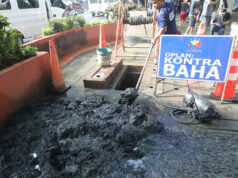Coca-Cola open to refranchising PHL operations

By Janina C. Lim, Reporter
ATLANTA-BASED The Coca-Cola Co. said it is open to potential partners for its bottling operations in the Philippines, after Mexico’s Coca-Cola FEMSA S.A.B de C.V. exited the local market.
“As with other markets that are operated by BIG [Bottling Investments Group], Coca-Cola has no deadlines or timetables for potential refranchising. We continually evaluate potential partners,” Coca-Cola Co. Senior Director for Financial Communications Scott Leith said in an e-mail when asked by BusinessWorld if the company is considering buyers for the Philippine business.
He is confident the company’s subsidiary, Bottling Investments Group, will be able to face the challenges such as the Philippines’ excise tax on sweetened beverages.
“We know that long-term, sustainable success is built on strong fundamentals. We always face changes and challenges — whether it involves new competition or new taxes — but our company has a heritage of focusing on the decades ahead, not just the quarters ahead,” Mr. Leith said.
“With BIG’s depth of experience and solid track record in Southeast Asia, we believe they will bring significant value to the Philippines business,” he added.
Coca-Cola Co. established BIG in 2004. BIG is now present in 18 countries, six of which are Southeast Asian nations namely Vietnam, Cambodia, Brunei, Malaysia, Singapore and Myanmar.
Meanwhile, Mexico-based Coca-Cola FEMSA S.A.B de C.V. confirmed that the excise tax on sugar was the primary reason in its decision to exit the Philippines.
Coca-Cola FEMSA Philippines has been struggling since last year after the government regulated imports of high fructose corn syrup (HFCS), a sweetener used by the food industry as an alternative to cane sugar.
The government, under the first package of its tax reform program, also levied a P12 tax on HFCS-sweetened drinks at the start of the year, double that of beverages using sugar.
Since then, Coca-Cola FEMSA Philippines has laid off an undisclosed number of workers and has reduced volumes of some products.
“This put restrictions on sweetener imports, sugar sources in the country and soaring local pricing of sugar. Prices of sugar have been up, up to 50%,” John Santa Maria Otazua, Coca-Cola FEMSA’s chief executive officer, said during its Aug. 17 teleconference with investors. A recording of the teleconference was made available on the Coca-Cola FEMSA website.
In 2013, Coca-Cola FEMSA bought the 51% stake in Coca-Cola FEMSA Philippines — named Coca-Cola Bottlers Philippines, Inc. (CCBPI), pre-sale — from the Atlanta-based firm for $688.5 million in an all-cash transaction.
Under the deal, Coca-Cola FEMSA was given an option to purchase CCBPI’s remaining 49% stake within seven years of the deal’s close or sell the acquired majority stake back to its parent firm after six years.
Mr. Santa Maria said the firm has sought modifications on its agreement with Coca-Cola Co., but only half of the requested conditions were approved.
“We have a different view on the impact of the excise taxes and the change in the local sugar market dynamics could have in the value and profitability of the operations, elevating the uncertainty level of our original investments in this asset,” Mr. Santa Maria said.
“This was a particularly difficult decision. After more than five years of deploying our capabilities to develop this market, we have included an efficient turnaround. We achieved important milestones such as obtaining 3.5% compounded annual growth rate in volumes, 5% compounded annual growth rate in revenues historic profitability levels, EBITDA margins 12% to 16%; record investments and last year hitting all time system profit highs for the last 15 years,” he added.
Coca-Cola FEMSA invested some $650 million in its Philippine operations in the last five years.
“As always, in Coca Cola FEMSA we are internalizing potential strategic opportunities that exist without being restricted to a territory or region. So we’ll continue to evaluate opportunities in various markets that could even be in Southeast Asian countries,” Mr. Santa Maria said.



